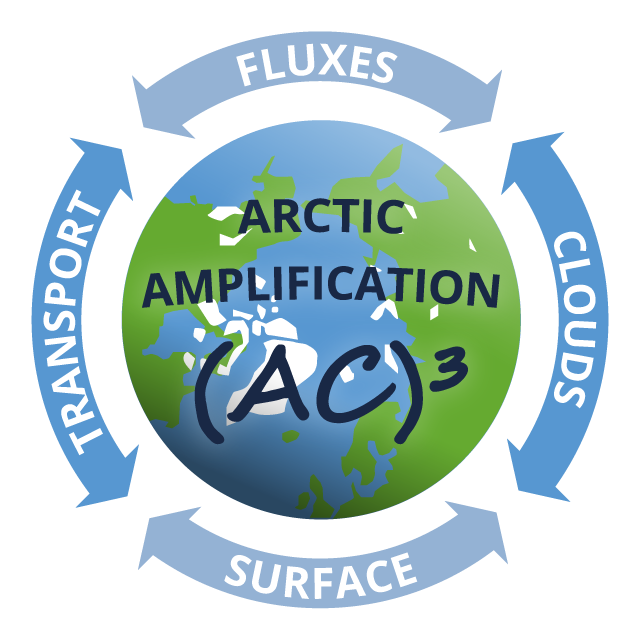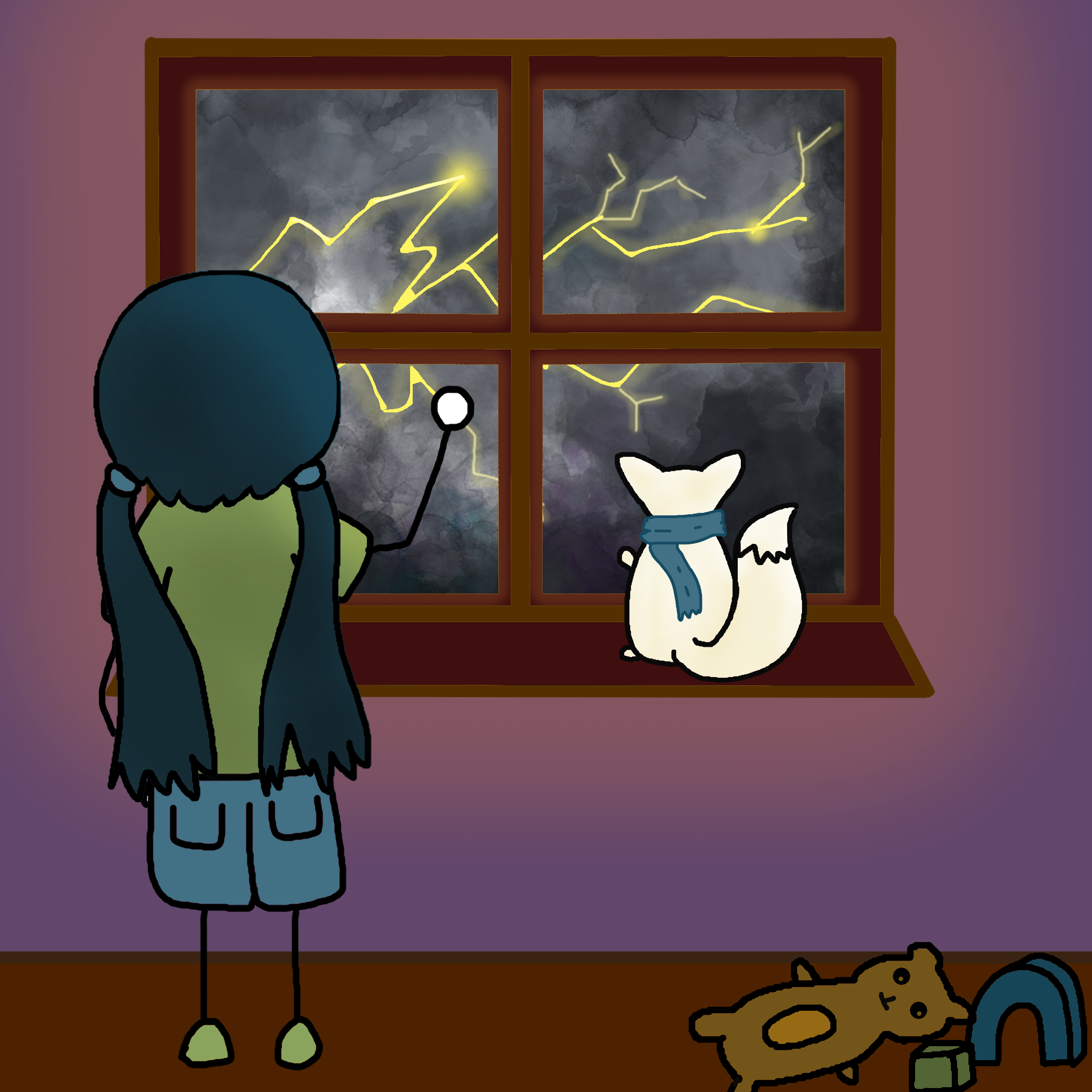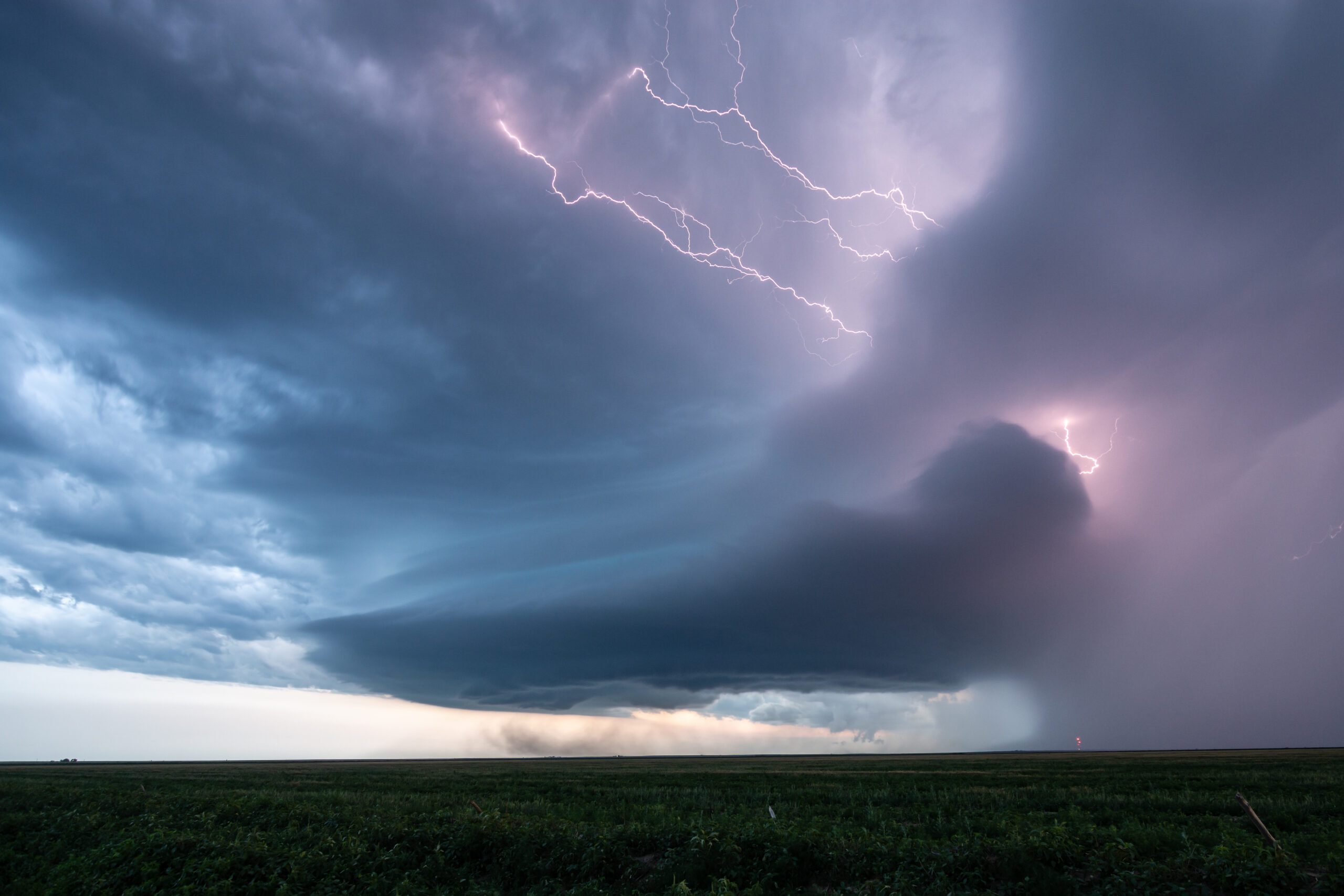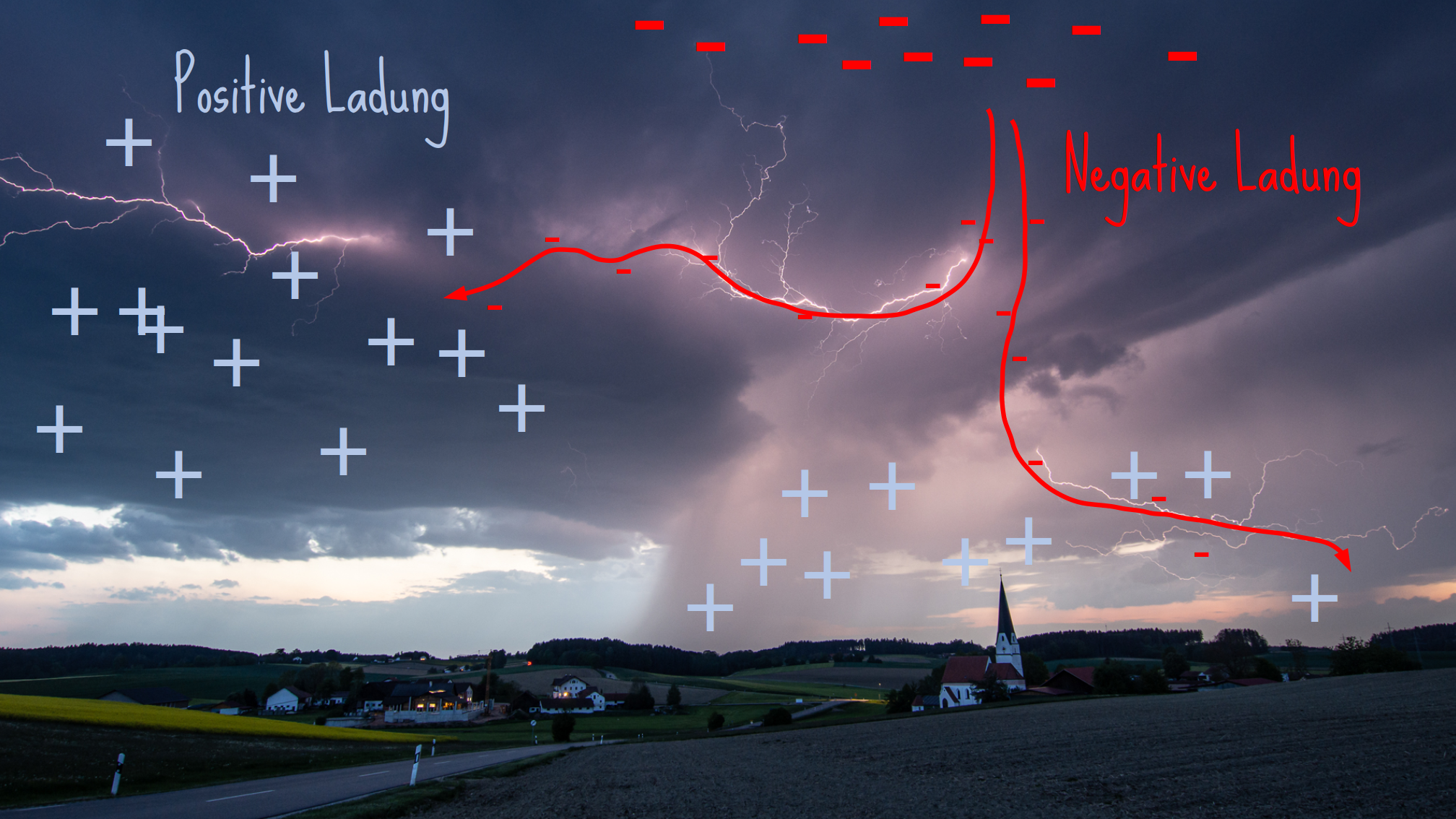How is lightning formed?
Mika and I are currently visiting (AC)³ researcher Sofie Tiedeck at the Alfred Wegener Institute in Potsdam. Yesterday, there was a really violent thunderstorm here! I found it a bit scary. But Mika sat enthusiastically at the window and watched the lightning.
Lightning is formed when storm clouds become electrically charged. I just learned what electrical charge is and reported on it here in the climate diary. Researchers themselves are not yet sure exactly how this happens! One theory is this: thunderclouds often contain hailstones. Hailstones are ice crystals with water droplets frozen to them (you can find out more about hail here). The hailstones collide with each other, separating positive and negative electrical charges. The underside of the cloud then becomes negatively charged and the top of the cloud positively charged. It’s just like when I rub a balloon over my hair! The balloon and I also become electrically charged.
When a lot of negative charges have accumulated on the underside of the cloud, the voltage between the underside of the cloud and the Earth’s surface or the top of the cloud becomes too great. The air then becomes conductive and discharges the charges as if through a power cable. This releases a great deal of energy, which we can see as a bright flash of lightning: some lightning strikes the ground, while others only flash in the sky.






